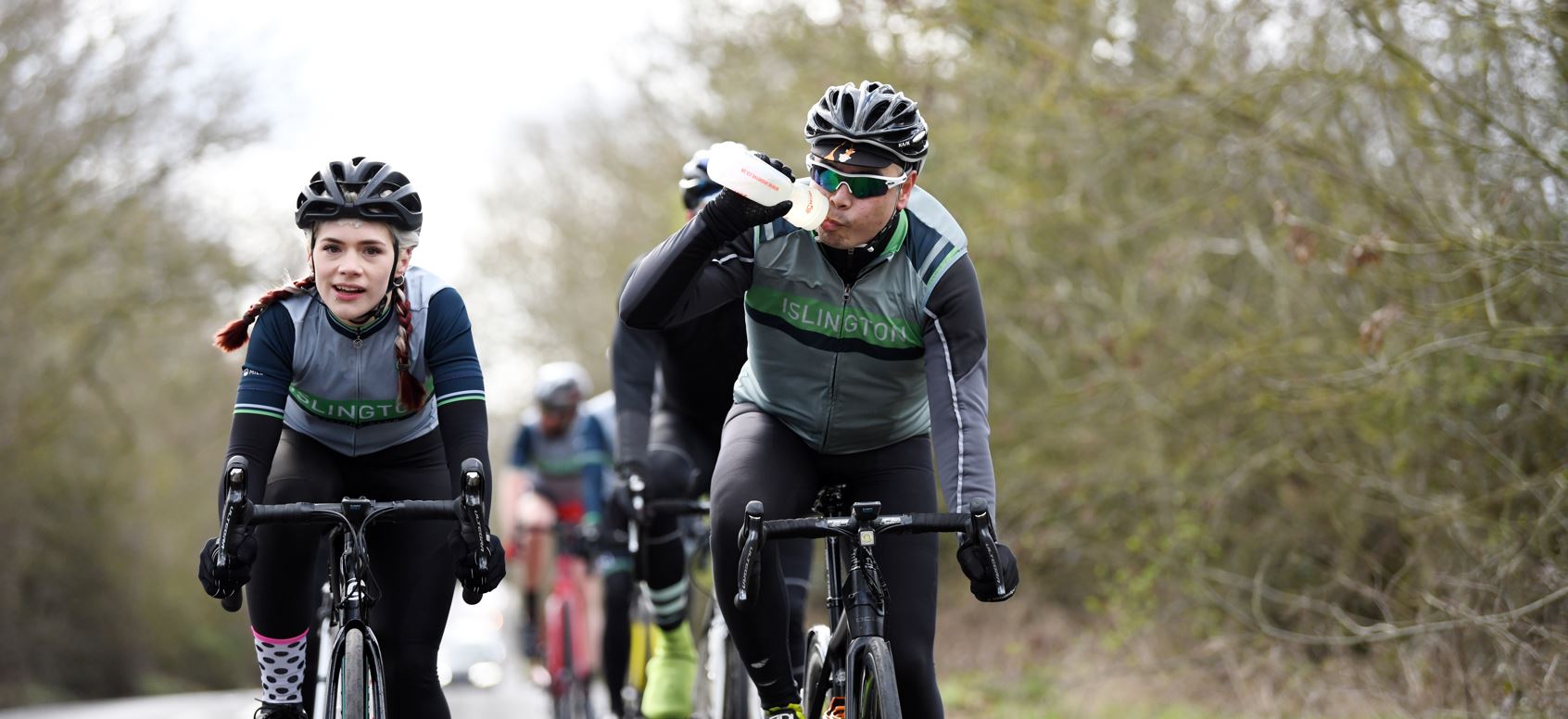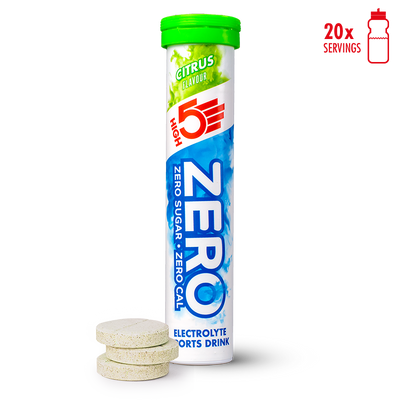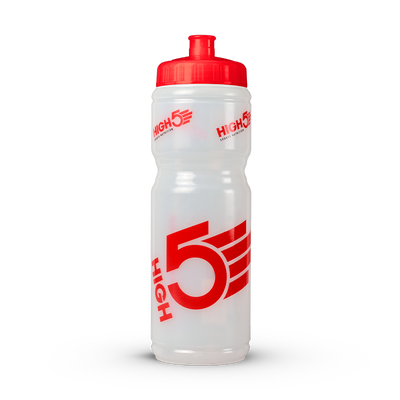Cross training should not be seen as the option of last resort just when we are injured. It should play a regular part of our training, regardless of what race you’re training for.
WHAT ARE THE BENEFITS OF CROSS TRAINING?
Switching out one run each week for a cross training session, can be a wise move to keep overall mileage down but still challenge our cardiovascular system. A lower mileage volume will not only lessen the impact on our soft tissues and reduce risk of injury, but it can also keep you mentally fresh – there will be days when the thought of another long hard, lonely run is just becoming a grind.

A bike ride through some nice country roads can offer just as much benefit to your heart and lungs and serve as a mental refresh! It's also a great option to build up endurance. GB International Marathon Runner, Tish Jones (Coach: Nick Anderson) ran a personal best of 2:31:00 at London Marathon in 2019, with much of her training lead up based on cross training due to injury. But cross training had been a staple of her training even before that. “For the last three years I’ve been doing about 70% of my training on the bike and up to 400km a week on the bike, which is sometimes more than triathletes do”.
WHAT ARE THE BEST CROSS TRAINING WORKOUTS FOR RUNNERS?
Many of your training sessions can be replicated in a form of cross training. This may be swimming, aqua jogging, rowing, on the cross trainer or elliptical or cycling. Ultimately, your cardiovascular system is challenged by time and intensity of exercise, not the specific type. So, working in your easy, threshold or VO₂ max training zones can be easily replicated through these other activities.
Most Sport GPS watches have profiles to cover swimming, cycling, indoor cycling and many other activities – so you can still use these to ensure you are training in the right zone and track your overall fitness levels.
WHAT ABOUT STRENGTH & CONDITIONING?
When you are training hard most days of the week with high mileage, it can be difficult to ensure you are doing regular strength work – but lack of sufficient focus on strength work is a likely risk factor leading to injury. So don’t wait until injury forces you into the gym for some rehab work, be consistent with strength work every week during your marathon training. (Strength & Conditioning ideas below 👇)
That's not all. Resistance strength training has now been shown to be a key factor in improving running economy.
In the simplest of terms running economy means the amount of energy (oxygen) we expend running in the aerobic zone. And we know we can improve this through training and high volume of miles...but approximately 20% of expended energy while running is spent stabilizing in the frontal plane (side to side).
Resistance training has been shown to improve running economy by 3.9% (Sports Medicine Research). So, if you want your running form to hold through the last 10 miles of the marathon, then ensuring regular weekly strength sessions is key.
Time should also be dedicated to Pilates or Yoga and regular mobility and stretching. Keeping your muscles supple and improving range of movement in your hips, back and ankles can all pay huge rewards come race day.
So, if you want everything to come together nicely at with your running, then mix things up a little, keep the body guessing and add in some regular cross training activities and you will be on the start line fresher, fitter and ready to go.

WHAT FACTORS SHOULD YOU CONSIDER WHEN CROSS TRAINING?
TIME AND EFFORT
If you are struggling to get out and run through injury or weather conditions you can complete key sessions in your plans using cross training. Runners tend to panic and just stop when injury hits. Provided you can do other activities / exercises safely and pain free you can maintain and even progress your fitness.
Simply replicate the time and effort we have asked in the running session using the other training options available to you.
KEEP IT SPECIFIC
Whilst cross training can add masses of value and variety to your weekly training remember your goal. At the end of your block of training you need to feel you have the strength and the fitness to run your chosen event.
The minute your conditioning or cross training is getting so hard that its leaving you too tired to complete your key runs, or even risks injury itself then the cross training has lost its benefit. Remember it’s there to support your running, not totally replace it.
HEART RATE
If you want to get serious with your cross training, you may wish to explore investing in a heart rate monitor which will help you hit the training in the correct effort zones and allow you to keep a track of your developing fitness as you run and train more.
Over time you should feel that you are better able to control sudden increases in heart rate and that you will be able to run at a similar speed but a lower heart rate. You may also notice your resting heart rate going down a few beats!
GET STARTED WITH THIS STRENGTH & CONDITIONING ROUTINE!
Think of your core as the chain that holds your body together, essentially your body without arms and legs. This is important because having a strong core doesn’t just mean having a nice 6 pack...Core muscles also include your obliques, your pelvic muscles, your hip muscles, muscles around your lower and middle back and your chest, even your diaphragm – yes that’s right the muscle that helps you breathe – so crucial for running then!
Putting it simply, a stronger core will see you running faster times with reduced risk of injury, and it doesn’t mean hours spent in a gym.
The simple core routine below performed regularly will help develop stability and balance in your running stride and improve your posture to help with your running efficiency.
Perform all the following exercises 3 times and aim for 2-3 sessions a week.
The Finger Crusher
A crucial and under-utilised exercise, this small core engager will reap big rewards.
Breaking it down - Lie on a mat in a sit up position, find the natural arch in your back, place your hands under this arch, engage your lower abs and pelvic floor and pushing your spine down on to your hands, trying to crush your fingers. Aim to keep the pressure applied evenly to your fingers for at least 30 seconds
Muscles strengthened – The multifidus – the tiny but crucial muscles that stabilise the spine, the pelvic floor which provides support to all your pelvic organs and the TVA, which stabilises
Fancy stepping it up? - Add small alternate leg lifts, while keeping the pressure on your hands even.
Plank Routine: Front plank - side plank - side plank
The plank in all its forms is an essential runner conditioning exercise, helping you to keep your posture through each stride, especially when tired.
Breaking it down – Start with a front plank - Lie on your front and raise your body up on your elbows with your forehead over your hands. Keep a straight line from the neck down through the legs to your ankles; engage all your core muscles by sucking your belly button up to the ceiling. Try to imagine lengthening your body out form the shoulders forwards and heels backwards, as well as lifting through the mid-section.
Now move into a side plank - Make a right angle with your supporting arm, roll your body onto this arm keeping your other arm above your head, keep your feet together and your stomach strong. Rise up, lifting your hips, making sure you squeeze your glutes, pushing your pelvis through. Repeat on the other side by rolling through to your other elbow. Aim to build up to holding each pose for 45s or more.
Muscles strengthened – Erector Spinae, which helps to straighten your back, your abs, chest, and your TVA. In addition to these the side plank helps to develop your oblique’s.
Fancy stepping it up? – Make your front plank more challenging by alternately legging each leg from the floor by 5 or 6 inches whilst trying to keep you core strong and hips level. Progress your side plank by lifting your top leg whilst maintaining your hip position.
Bridge
The glutes are your big running propulsion muscles. The bridge helps to engage this crucial engine whilst also developing hip and spine stability.
Breaking it down - From a sit up position, keep your stomach strong, engage your glutes and push your hips up to keep a straight line from your shoulders, through your hips to your knees. Keep your hips high by squeezing your glute muscles. If you find your hamstrings working more than your glutes, tuck your feet a little further under towards your backside.
Muscles strengthened – the bridge principally works your gluteal muscles that extend your hips but also develop your rectus abdominus and TVA
Fancy stepping it up? – Once in a strong bridge position try extending one leg out straight from the knee, without letting your hips drop!
Press Up
Quite simply one of the best exercises you can do. Having the stability benefit of the plank the press up also conditions your upper body…. why is this important? – you’ll swing your arms well over 35,000 times during a marathon!
Breaking it down - place your hands shoulder and a half’s width apart, get into the plank position, but with your knees touching the ground and feet off the floor, lower your chest to the floor and push back up, not just pushing through your chest and arms, but also through your core. Push yourself until your feel you could only complete 1 more repetition without failing…
Muscles strengthened – The press up is a fabulous full body exercises because in addition to working all the muscles used in a plank your also develop your pectoral and tricep muscles in your arms which play a crucial role in providing power and balance in your running stride.
Fancy stepping it up? – Go full body! Instead of placing your knees on the floor complete your press up whilst holding a full plank position but maintain the depth of your press up. This dynamic full body exercise is all about the legs, it also helps develop core stability and control as well as hip alignment.
Walking Lunge
This works all the key the running muscles in a fantastic full chain movement. Control and alignment are crucial so don’t rush this one!
Breaking it down – From a tall standing position, step forward into a lunge position, keeping your back heel lifted, with hands on hips, and squeezing the glute of your rear leg. Bend each knee to 90 degrees. Work to keep your upper body tall and shoulders back, your knee should NOT be over the front of your toes. From the lunge position squeeze the muscles of your front leg to get back to the standing position before stepping forward into another lunge with the opposite leg. Work to minimize any poor balance by focusing on a good alignment with toes, hips and chest all pointing forwards. Complete between 5 and 10 steps with each leg
Muscles strengthened – The walking lunge is incredibly effective because not only does it work both the key anterior and posterior muscles of the legs (quads, glutes, hip flexors, and hamstrings) evenly it also requires excellent core stability through your TVA and erector
Fancy stepping it up? – Holding a weight such as a medicine ball directly out in front of your body, step into your lunge before turning your upper body from the hips over your front leg, bring your arms back to the centre before moving into your next lunge.
Single Leg Squat
It’s all about specificity with this one - engaging all the muscles that move you from one stride to the next the single leg squat strengthens your body whilst mimicking and exaggerating the movement.
Breaking it down - Stand on one leg, engage your glute on your standing leg, keep your hips facing forward and aligned with your knee and toe. Imagine sitting back onto a chair and bending your knee to lower your body towards the ground. You don’t want your knee to roll inwards, so go down as far Aim for 8-12 repetitions on each leg.
Muscles strengthened – the powerful leg muscles – quadriceps, hamstrings and calf muscles. The real advantage though of the single leg squat is that it requires the balance provided by your gluteus maximus and abs as well as your erector spinae – a true full body exercise. By ensuring your knee does not 'collapse inwards' you will also be learning to control and engage your glute medius muscle.
Fancy stepping it up? – Try your singe leg squats on a balance board or BOSU ball to take away stability – but keep that focus on form!







